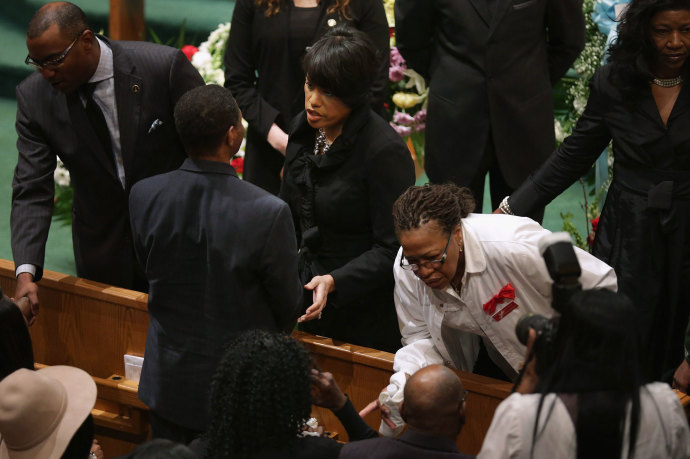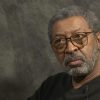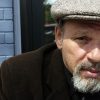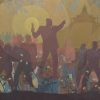By Jelani Cobb
 The mayor of Baltimore, Stephanie Rawlings-Blake, was among thousands who attended the funeral of Freddie Gray, who died of injuries received while in police custody. Credit Photograph by Chip Somodevilla/Getty
The mayor of Baltimore, Stephanie Rawlings-Blake, was among thousands who attended the funeral of Freddie Gray, who died of injuries received while in police custody. Credit Photograph by Chip Somodevilla/Getty
Six weeks ago, before Baltimore had become the latest venue for outrage over the killing of black men by the police, Mayor Stephanie Rawlings-Blake delivered her annual State of the City address. Rawlings-Blake, who served previously as the chair of the city council, ascended to her current post in 2010, when her predecessor was indicted for embezzlement. She was elected the following year with eighty-four per cent of the vote. Like most such speeches, the State of the City was a mixture of praise for various categories of noble citizens, statistical self-congratulation, and pledges to deliver more such progress in the very near future. It would scarcely have been worth noting were it not for a paragraph buried in the middle section of the address:
• • •In the wake of Ferguson and of Eric Garner’s death, in Staten Island, Rawlings-Blake’s remarks and her wider emphasis upon returning police to neighborhood patrols were hailed as forward-looking. Here was a mayor addressing police use of force before any single outrage or crush of media inquiry forced her to do so. But this past Saturday, Baltimore City Hall, where she had delivered that address, was the site of a protest in response to the death of Freddie Gray. Gray, who was twenty-five years old, was taken into custody on April 12th and put into a police van, from which he was removed, about forty-five minutes later, with catastrophic spinal injuries. Those injuries have not been explained; Gray slipped into a coma and died a week later. I spoke to several of the hundreds of demonstrators there that night, who concurred that the reputation of the city had been damaged. Few, though, thought that it was due to the actions of just a few bad actors.
Baltimore is nearly synonymous with “The Wire,” the television series that used it to metaphorically render the decline of the American city. Over the course of five seasons, the show depicted a city betrayed by paralytic bureaucracy, a self-serving political class, and a police force in which petty imperatives of careerism continually undermined any possibility of actual reform. The circumstances of Gray’s death, under unknown circumstances and for opaque reasons, seem like something conceived in a pitch meeting for the show. Gray was initially pursued by officers on bicycle patrol. The idea of placing officers on bikes in a high-crime neighborhood in West Baltimore denotes precisely the type of idealism that many hoped would foster better interaction between police and communities. Rawlings-Blake’s speech and the protests were evidence of feuding realities: a forty-six-per-cent decline in allegations of police brutality is a politician’s metric of progress, but people tend to think of these matters qualitatively.
At the same time, Gray’s death is part of a tableau of frustration in which the dateline seems increasingly incidental. In the three years since Trayvon Martin’s death, in Sanford, Florida, public attention has been successively directed to Jacksonville, Florida (Jordan Davis), Ferguson, Missouri (Michael Brown), Cleveland, Ohio (Tamir Rice), Chicago, Illinois (Rekia Boyd), Staten Island, New York (Eric Garner), North Charleston, South Carolina (Walter Scott), and Tulsa, Oklahoma (Eric Harris)—a blurred collection of terrible redundancies.
Rice was a twelve-year-old boy who was playing with a toy gun in a public park when he was shot by police; Boyd was a bystander, killed when a police officer opened fire on an unarmed man nearby; Gray led police on a foot chase prior to his arrest; Harris allegedly tried to make an illegal handgun sale in the moments before he was shot by a volunteer deputy, who said he thought he was holding his Taser.
The Black Lives Matter movement, which has sprung up in the context of these deaths, looks at those disparate stories as sharing a common bond based in race. A too cavalier acceptance of the use of lethal force, even against those who may have committed a crime, serves to make the deaths of people like Boyd and Rice all the more probable.
Two days after Gray succumbed to his injuries, the Times published a story tallying up the cumulative effects of incarceration and early mortality on the African-American population. It found that some one and a half million black men had effectively disappeared from their communities. One of the chief dividends of racism is the blithe sense of remove that much of America has from that reality. Protesters know it—it is one source of their outrage.
The protest on Saturday migrated south of City Hall, through the inner harbor, and west along Pratt Street toward Camden Yards Stadium, where the Orioles were scheduled to play the Boston Red Sox. At the corner of Pratt and Light Street a few dozen people held up traffic and staged a spontaneous die-in, sprawling themselves on the asphalt in poses straight from crime-scene photos. There was a comparatively light police presence along the route, but dozens of officers in riot gear blocked the crowd from getting near the stadium, which seemed to confirm the protesters’ most damning suspicions. A man near the front shouted, “They only care about the Orioles!”
The scene seemed like a neat summation of much that animated the protests in Baltimore and beyond. In Ferguson, on the night that the grand-jury decision declining to charge the officer who shot Brown was released, police were deployed largely on the main commercial strips. In the triage logic of municipal governance, it makes perfect sense to protect valuable real estate and businesses. But to people already infuriated by the self-protecting reflexes of bureaucracy, this was an additional insult—not because businesses don’t warrant police protection but because they could scarcely imagine the police deeming their own communities as worthy of protecting that way.
Those disparate realities produced bizarre dissonances in Baltimore. On Pratt Street, a scalper tried to sell game tickets to the protestors marching toward the stadium. For a brief moment, it was possible to purchase both a Baltimore Orioles and a “Black Lives Matter” T-shirt on a single corner. On Howard Street, which runs alongside Camden Yards, cheers from the stadium competed with angry chants from the streets. The public-address system in the rail station that connects the stadium to downtown announced, “Due to a large number of protestors in the area, the system is experiencing significant delays. We apologize for any inconvenience.”
Just before 7 P.M., the protestors doubled back toward downtown and began smashing the windows of police cars parked next to the light rail. A detail of police ran up the street, past the row of now-windowless cars, but just as it seemed that bedlam would erupt, they stopped and a tense standoff with the protestors resumed instead. Traffic on the nearby streets choked to a halt. Protestors began chanting, “The police broke his neck!” By sunset, the protest had dwindled, though it remained tense enough, for a while, for the mayor to request that fans delay leaving the stadium after the game ended. The Orioles beat the Red Sox, five to four. On Monday, thousands of people gathered for Freddie Gray’s funeral.
A decade ago, Baltimore achieved an undesirable recognition as the birthplace of the “Stop Snitching” movement, which popularized the idea that residents should not coöperate with police when they have information about a crime. The irony has not been lost on those within the city who see the mystery surrounding Gray’s death as a product of a police department unwilling to pronounce its own wrongdoing. The demonstrations on Saturday were mostly peaceful. Still, as the stadium emptied, under a heavy police presence, brushfires of violent protest broke out in the West Baltimore neighborhood where Gray was arrested. The common presumption was that there would likely be more such nights in Baltimore before all was said and done.
The sliver of hope that Baltimore might not fully teeter into bedlam went up along with the neighborhood CVS, the police vehicles, and the buildings that were ignited on Monday. The day began with a plea for a moratorium on protests from Fredricka Gray, Freddie Gray’s twin sister, so that her family might bury her brother in peace. But by the afternoon, there was no peace for Gray’s family, nor any other in the city.
On Monday afternoon, the governor of Maryland issued a state of emergency. Flyers for a Saturday rally issued by the Black Lawyers for Justice urged protestors to “shut the city down.” Two days later, the city is a theatre of outrage. The flames leaping into the sky underscored a crucial concern: if the pleas from Freddie Gray’s family could not forestall violence in the streets of Baltimore, the difficult question will be what can prevent more of it.















